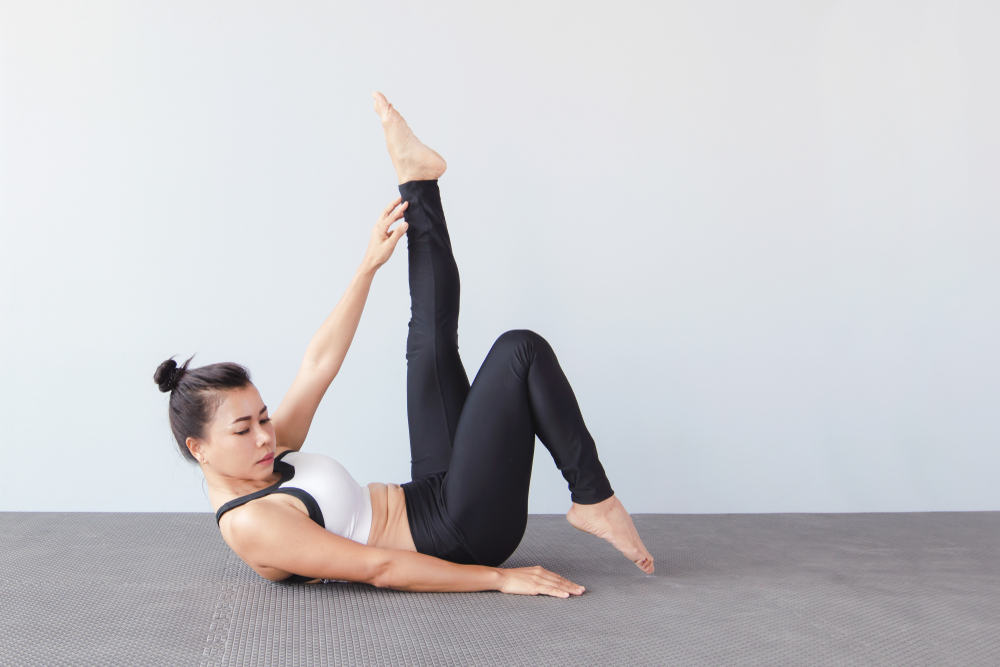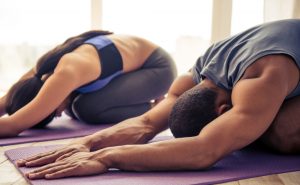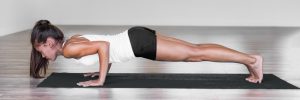
If you’re completely new to yoga, it can seem challenging, and it’s hard to know where to start. But we’ve put together our best yoga for beginners guide that will make things much easier for you. Here you’ll find our recommendations, tips, and guidelines that will help you practice yoga successfully.
Before we get started, a word of warning: it’s not a good idea to start practicing yoga on your own without any guidance. Yoga can be bad for your body and even dangerous if you don’t practice it properly. We recommend attending some yoga classes with a fully qualified instructor.
So, we would recommend that if you’re new to yoga, you read our entire article before you start practicing it. Let’s begin with the basics and see what yoga is all about.

Yoga: The Basics
Yoga is an ancient tradition that originated in India; and one that is now practiced all over the world. It is a compilation of various techniques – both spiritual and physical – that aim to integrate the mind, body, and spirit. The unity of mind, body, and spirit is intended to bring the yoga practitioner or yogi to a state of enlightenment.
Enlightenment was the original goal of ancient yoga, a state of mind where a person achieves unity with the universe. There are many different yogic traditions, each with its techniques and philosophies. In the west, what we call yoga is a specific yogic tradition called Hatha Yoga.
Hatha Yoga utilizes yoga postures (asanas), yogic breathing (pranayama), internal cleansing (shatkarma), and physical gestures (mudra) to bring about a unity of the spirit, body, and mind. The physical exercises in Hatha Yoga purify the physical body and increase the life force or prana of the yogi.
While ancient yogic traditions had the goal of attaining spiritual enlightenment, yoga that is practiced in the west has a much more prosaic and down-to-earth objective. Hatha Yoga, which is now commonly practiced, aims to promote physical fitness and mental wellbeing in its practitioners. And it focuses on the physical aspect of Hatha Yoga.
Now that we know something about the origins and background of yoga, let’s see who yoga is good for.

Yoga: Who is it For?
Yoga can be practiced by anyone at all. It doesn’t matter what your age is, how much your weight is, which religion you follow, what your job is, or where you live. All kinds of people will find yoga to be a healthy form of exercise.
But if you have had a recent injury or you suffer from a medical condition, there are some yoga poses that you should avoid. Fortunately, most yoga poses have different variations, and you can choose a variation that doesn’t put stress on your injury.
Also, yoga can help to heal you from several injuries. There are special yoga remedies that play a big role in healing your body. So, yoga can be a form of natural healing. But we would advise you not to follow yoga remedies that you can find online. Instead, it would be safer and wiser to find a fully-qualified yoga instructor who will be able to guide you properly.
Now that you know that yoga is for everyone let’s see how it should be practiced.

Practicing Yoga For Beginners
If you haven’t exercised for a long time and you think you’re out of shape, then the best yoga for beginners will be yoga poses that are easiest to perform. Once you build up muscle strength and flexibility, you can graduate to doing more difficult poses.
However, if you’re already in good shape and have some flexibility, you can start directly with Hatha Yoga exercises. Once you learn the basic exercises, you can take a flow class or vinyasa to further improve your yoga skills.
We would discourage beginners from trying the more advanced forms of yoga as they can be very challenging. Hot yoga, Bikram Yoga, and Ashtanga Yoga are some advanced yoga practices that you should only try once you’ve become used to Hatha Yoga.
Yoga is usually practiced on a yoga mat with some additional yoga props. Yoga practitioners wear clothes that can easily stretch when they perform yoga poses. The clothes that you’ll need for yoga will be easily available from any sports store in your area. But when you first start, you can just choose some clothes that are loose and comfortable from your wardrobe. You won’t need any special footwear, however, because yoga is typically performed barefoot.

In some yoga classes, you may be required to bring extra yoga props. The common yoga props are bolsters, blankets, blocks, and straps. But you don’t have to buy these props immediately. Instead, you can use pillows, scarves, or books stacked one on top of the other as homemade replacements for yoga props. And if you take yoga classes at a yoga studio, they will provide all the required props once you pay their membership fee.
When you perform yoga for the first time, we would recommend only doing the basic yoga poses. Try to keep your yoga session short so that your muscles don’t get overtaxed. Once you’re used to the basic poses, you can incorporate them into an easy sequence and slowly add more advanced poses to your routine.
We would recommend short and frequent yoga sessions to get the most out of this form of exercise. We would suggest 30-minute sessions, conducted three days each week, to produce significant results for beginners. After around a month, if you’ve practiced yoga as we’ve recommended, you will notice several positive improvements in your body.

The benefits of yoga are numerous. For instance, you will notice that your body has become much more flexible once you start doing yoga regularly. Another positive will be an increase in your balance and muscle strength. But apart from physical benefits, yoga is also good for your mind.
Practicing yoga will reduce your stress levels and make you feel more relaxed. It can also reduce depression and promote a sense of happiness. And if you’re having trouble sleeping, then yoga could help you get to sleep more easily as well. All in all, yoga is a wonderful form of exercise that can be great for everyone!

Frequently Asked Questions About Yoga
Q. Will yoga help me lose weight?
A. While you may not be able to lose a significant amount of weight with yoga, it can help you get in shape and tone up your muscles. And when combined with a healthy diet, yoga will make your body more efficient at burning calories while at rest, which means that dinner won’t turn into excess calories.
Yoga can help you lose weight if you have a healthy diet as well
Q. Where should I practice yoga?
A. You can always practice yoga at home or in a studio, but many people may prefer the latter option since it’s more fun and you won’t feel self-conscious about your moves. Yoga studios will provide you with all the necessary props such as blocks, straps, and bolsters required to perform various types of yoga poses.
Q. What are the benefits of yoga?
A. People practice yoga for many reasons – to improve their health, increase flexibility, reduce stress levels, etc. But the most significant benefit of yoga is that it moves your internal organs and cleanses your blood. Yoga can also improve the lymphatic system.
Q. Is there any wrong way to do yoga?
A. There are two common mistakes that beginners make – forcing yourself into poses that you’re not ready for, and expecting immediate results. Yoga is a long-term process that will take time before you start to notice real benefits.
Q. How many times per week should I practice yoga?
A. We would recommend practicing yoga around three days each week to get the benefits of this form of exercise. You can also do it every day but in a short session since a long yoga session can lead to muscle fatigue.
Q. What poses should beginners avoid?
A. If you’re a beginner, you shouldn’t try out difficult poses such as arm balances or handstands. Wait until you gain more flexibility and strength before attempting any advanced moves.






